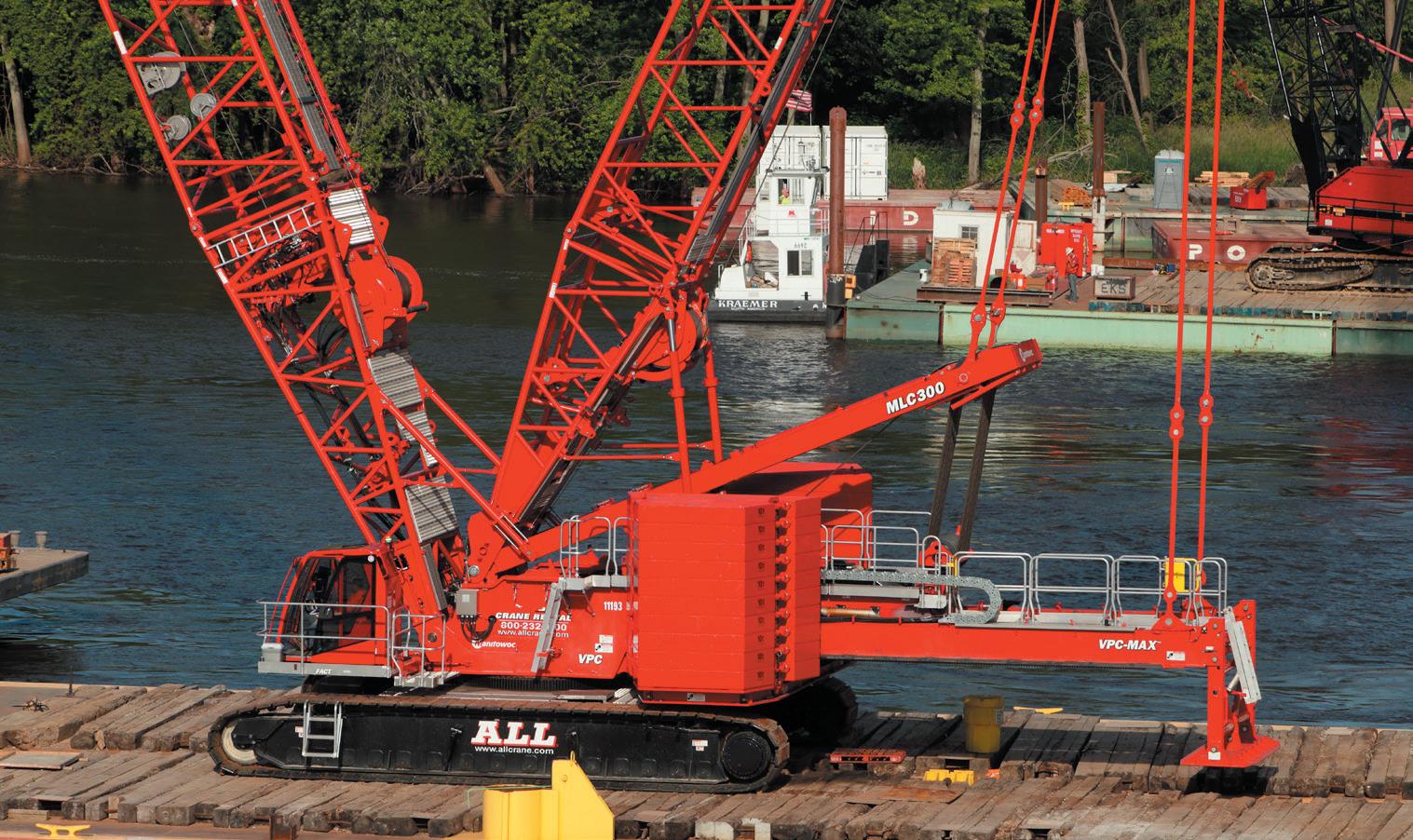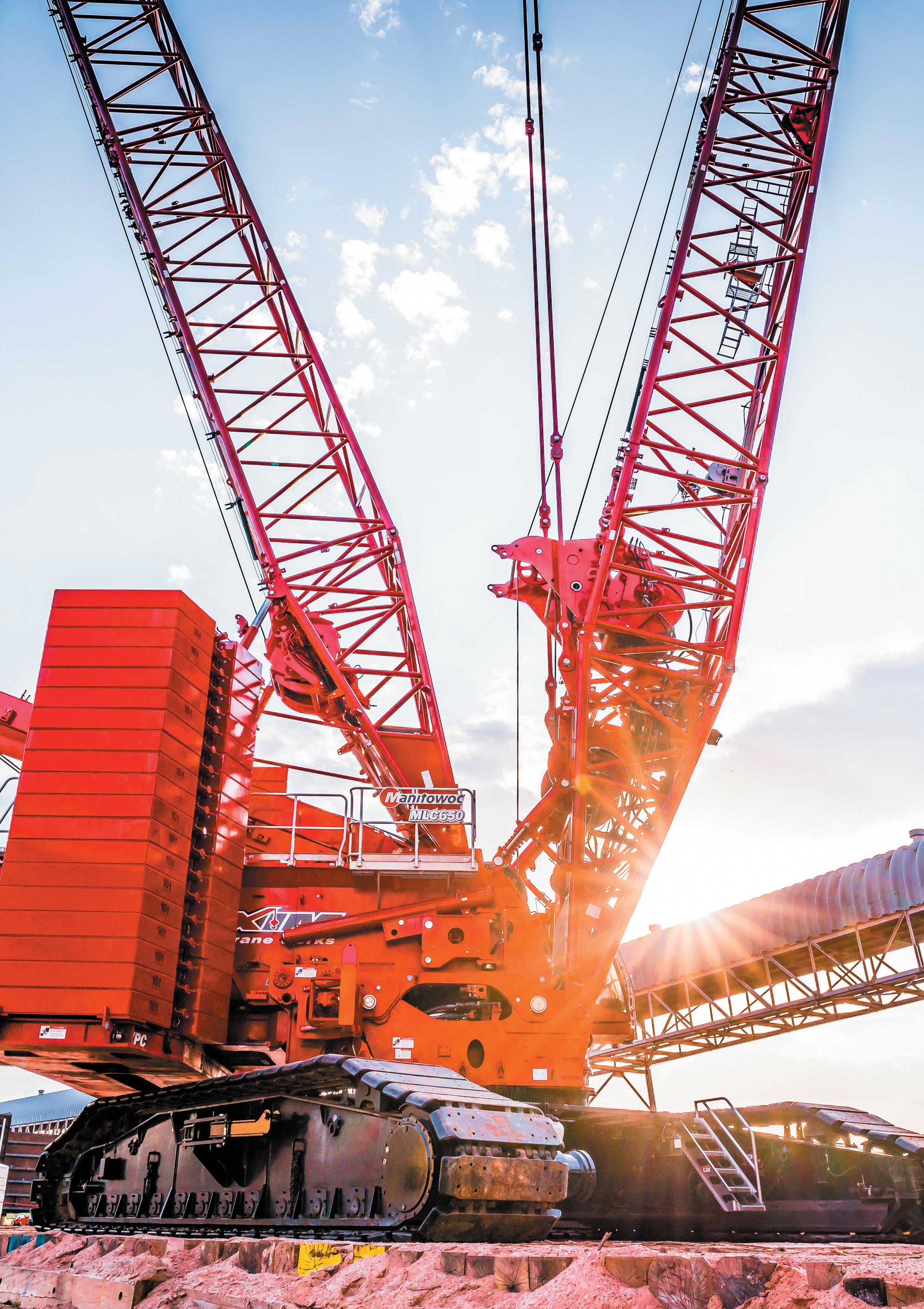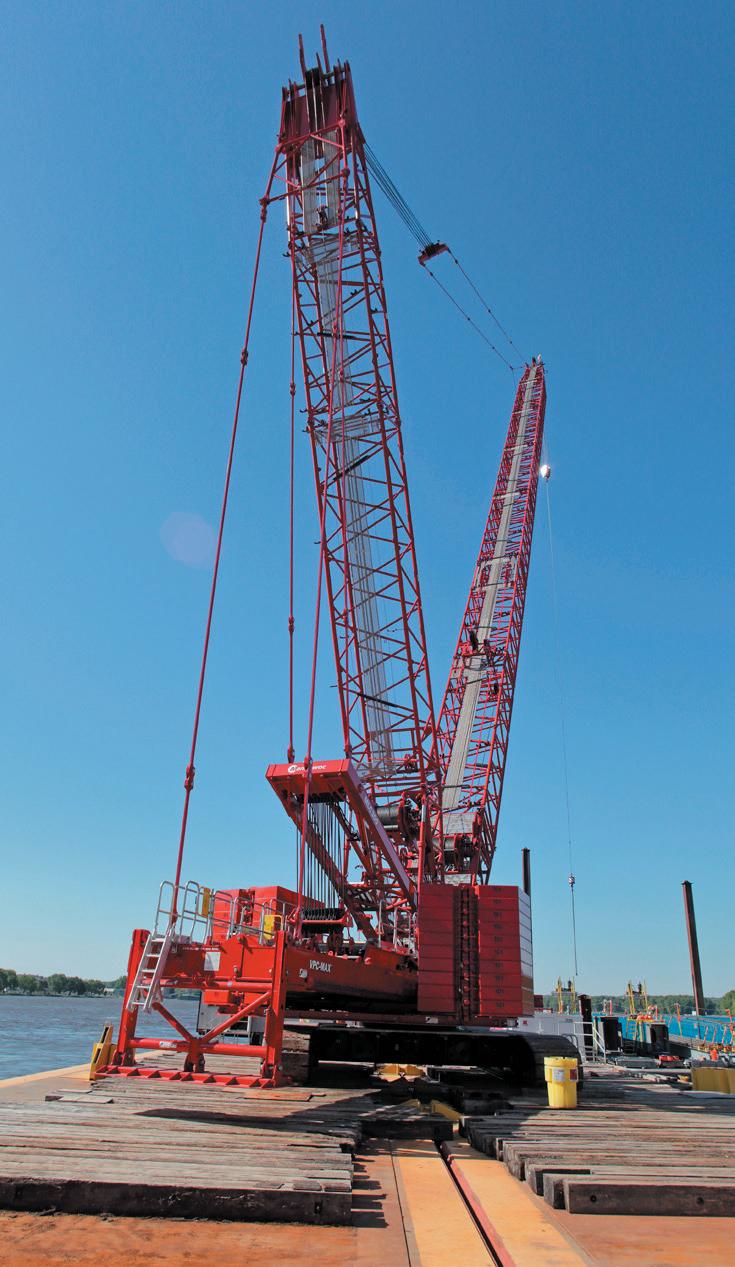
3 minute read
Manitowoc’s VPC improves safety and lift capacity for barge-mounted cranes
Manitowoc’s unique and patented Variable Position Counterweight, or VPC, remains one of the most significant innovations and contributors to crawler crane safety in recent times. It is unique in its ability to automatically position the counterweight to suit a required lift and it promotes safety by limiting listing, minimising ground pressures and ensuring stability.
Among its many benefits is its ability to allow increased capacity for lifts on barges. The standard VPC and optional VPC-MAX technology is included on Manitowoc’s MLC300 (350t) and MLC650 (650/700t) models, and automatically positions the crane’s counterweight to match lifting demands. The counterweight moves along the rotating bed and automatically adjusts its position based on changes in boom angle. Because the counterweight attachment of the VPC-MAX never touches the ground, higher capacity lifts are possible, while set-up time is reduced, and transportation is easier and more economical.
Advertisement
One customer that took advantage of the VPC-MAX capabilities for a barge-mounted lift is Cianbro, a US-based construction firm that needed a crane to work atop a barge to help replace two aging transmission towers on the James River near Charlese City, Virginia.

Standing at 130m tall, rising from the James River, the new towers help feed energy from a nearby nuclear plant to the surrounding area. While planning the project, it became clear that a bargemounted crane would provide more efficiency, as the crane could complete lifts in closer proximity to the transmission towers. Previous generations of crawler cranes that would have been used to get the reach and capacity needed for the job may have been too large for erection on a barge. But the MLC650 with VPC-MAX had the reach and capacity in specialty barge charts to get the job done. “In the past, we would have had to build a trestle, cofferdam or causeway to accommodate a traditional crawler crane with the necessary capacity,” said Mike Berry, lift superintendent for Cianbro. “The MLC650 has the right capacity and a compact footprint that fits securely on a barge, which enables us to lift from an optimal position on the river.”

“The MLC650 with the VPC is the only crane that had a load chart that would enable us to complete the project this efficiently,” continued Berry. “Also, you don’t get any listing of the crane on the barge, so you can lift without moving the crane. The VPC counterbalances everything, and the crane stays level, even when completing the heaviest lifts.”
Always centred
In the Midwest of the US, another company to make use of VPC technology for bargemounted lifts is Kraemer North America, a Wisconsin-based company. For its project the company chose a Manitowoc MLC300 crawler crane with VPC-MAX heavy lift attachment to help replace an aging truss bridge near Savanna, Illinois.
“With the VPC, the MLC300 is always finding a new centre of gravity based on the load that’s on the hook,” said Patrick Shea, project manager for Kraemer.
“This crane helped us to achieve almost zero list while working on the barge,
keeping every lift level while minimising the barge’s rotation. And the VPC saves space, too—most crawler cranes with the required length of boom would not have fit on the barge in the first place.”
While planning the project—which involved the construction of two 292mlong outer plate girder spans and a central 166m-long tied-arch span—Kraemer realised that a barge-mounted crane solution would be necessary to access the lifts for the tied-arch span.
“The whole time we used the MLC300, we saw the barge list by less than a degree – it’s a testament to the stability that this crane provides and it’s a big reason we were able to keep to our schedule,” Shea said.
For more information about the Manitowoc VPC and its MLC300 and MLC650 cranes, visit www.manitowoc.com










